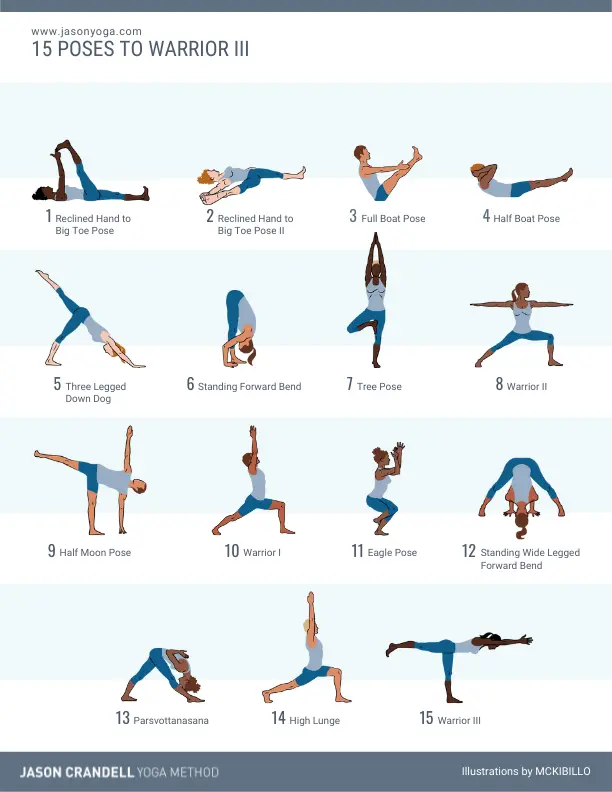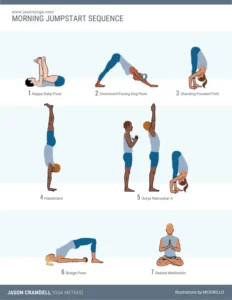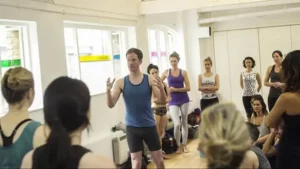WHY THIS SEQUENCE WORKS
I spent my first two years of yoga avoiding Warrior pose III. Then, I spent another year avoiding it. Finally, after avoiding it for an additional 15 years, I’ve made it a mainstay of my practice. What can I say? I guess it takes me a while to warm up to things that expose my weaknesses, knock me off balance, and frustrate my ego. I have to admit, I actually like it now.
Part of the reason I avoided the pose was that I didn’t feel that I should struggle with it nearly as much as I was. The degree of difficultly that I experienced didn’t seem commensurate with the challenge of the pose. After all, standing postures like Utthita Hasta Padangusthasana, arm balances like Eka Pada Galavasana, and balancing in inversions like Forearm Balance and Handstand weren’t very difficult for me. But, three seconds into Warrior III and I would topple over.
Now that I’m no longer avoiding the pose, I’ve figured out a few things that make it much more accessible and effective. Go figure, now that I’m not avoiding something, I’m actually learning about it—shocker. What incredible insights yoga teachers have, right?
Here are the things that I’m focusing on in the pose:
1) Strongly rooting down through the base of the big toe.
2) Strongly adducting both thighs toward each other like I’m squeezing a block.
3) Engaging the spinal muscles and hamstrings (of the top leg) like I’m doing Locust Pose.
4) Firmly pressing my hands together in Anjali Mudra for a few breaths to help me feel the midline of my body before reaching my arms forward.
5) Holding my breath, thinking about the future, judging myself, and assigning blame to others.
Here’s a quick sequence to help you build up to Warrior pose. I’ve been enjoying this sequence quite a bit lately.
15 Poses to Warrior III Pose
POSES 1-2
Simple, straightforward reclined Hamstring and Adductor lengthening to prepare for the upcoming demands of Warrior III.
POSES 3-4
Paripurna Navasana and Ardha Navasana pair perfectly to strengthen your core. Bringing your attention to your center early in this sequence will help you keep your attention focused on your midline when you get the wobbles in Warrior III later.
POSES 5-6
These two poses help you transition from the reclined and seated postures to the upcoming standing postures.
POSES 7-9
This is a progression of standing balances with the legs abducted and externally rotated. These postures will get you tuned in to standing balances and they’re typically easier than the upcoming standing balances.
POSES 10-12
These three postures shift the orientation of the legs and hips into the same orientation as the upcoming Warrior III.
POSES 13-15
Parsvottanasana gives you one more opportunity to prepare your hamstrings for Warrior III. Many teachers transition into Warrior III from Warrior I. I prefer transitioning into Warrior III from a high lunge. I think it makes more sense for the hips. Check it out and see what you think.
{illustration by MCKIBILLO}
Want more sequences by Jason?
Sign up to join our newsletter and we’ll send you our e-book:
30 Essential Home Practice Sequences.



